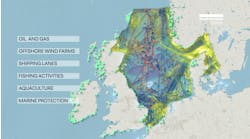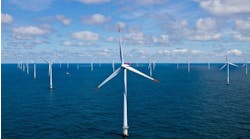UK reaffirms commitment to oil and gas leasing process
Offshore staff
LONDON — Britain’s government and the North Sea Transition Authority (NSTA) have committed to running future offshore oil and gas licensing rounds, although these will remain subject to a climate compatibility test.
Through a more flexible application process, the government added, licenses could also be offered close to currently licensed areas, allowing resources to be developed more quickly due to the proximity of infrastructure and previous relevant assessments.
According to the independent Climate Change Committee, oil and gas will still account for a quarter of the UK’s energy demand on reaching the net zero target in 2050. So, the government has decided to act now to slow the steep decline in domestic oil and gas production to ensure energy security and reduce dependence on ”higher-emission” imports, while also safeguarding the industry’s 200,000-plus jobs.
The NSTA expects to award first licenses from the UK’s current 33rd offshore oil and gas licensing round during the fall and more than 100 licenses in total. It is currently reviewing 115 applications.
Future licenses should also provide opportunities for offshore energy hubs including carbon capture usage and storage (CCUS) and hydrogen.
In addition, the government has confirmed that the projects Acorn in northeast Scotland and Viking in the Humber in eastern England will become the third and fourth CCUS clusters in the UK, following HyNet in northwest England and north Wales, and the East Coast Cluster in the Teesside and Humber regions, both of which could be operational in the mid-2020s.
The resulting CCUS industry could support up to 50,000 jobs in the UK by 2030. Prime Minister Rishi Sunak has asked relevant government departments and regulators to investigate the best approach for integrating Britain’s offshore resources with CCUS and hydrogen opportunities in the North Sea and to report back by the end of the year.
A newly launched call for evidence will seek views on the way forward for taxes for the oil and gas sector to formulate a long-term fiscal regime that delivers predictability and certainty, the government added.
According to a new report from the NSTA, North Sea gas is on average four times cleaner than gas imported as LNG, due to emissions generated from the liquefaction process, transportation via ships and regasification on arrival at UK LNG import terminals.
LNG from Norway has the lowest carbon intensity at 33 kgCO2/boe, the average being 79 kgCO2/boe. The UK’s gas carbon intensity is said to be 21 kgCO2/boe.
The report shows that about 63% of UK gas supply is imported into the country, 187 MMboe via pipeline and 156 MMboe from LNG. The UK produced 38% of its gas supply [in 2022], a total of 206 MMboe. Yet that 38% was responsible for only 24% of total emissions associated with gas supply, whereas LNG from the US was responsible for 35% of the emissions, despite being only 14% of the supply.
07.31.2023



